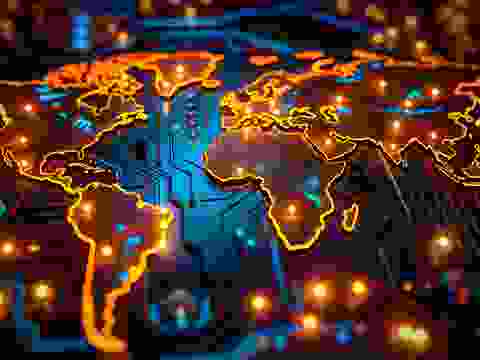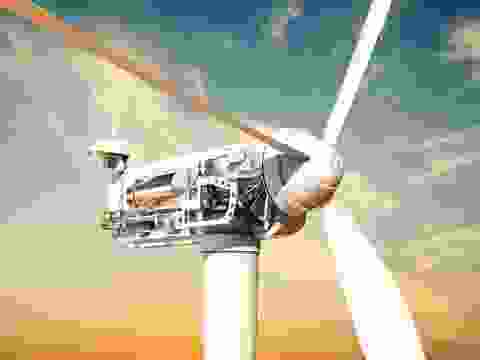New Zealand's Antarctic Territory
Critical minerals, policy, and the energy transition
The Energy Transition in New Zealand's Antarctic Territory Claim
The Ross Dependency, New Zealand’s Antarctic Territory, holds growing relevance in discussions surrounding climate change, scientific cooperation, and resource governance. As global demand for critical minerals intensifies—driven by technologies such as wind turbines, solar panels, and electric vehicles—the long-term strategic interest in Antarctica is increasing. While the Antarctic Treaty System, including the 1959 Antarctic Treaty and the Madrid Protocol, prohibits commercial mineral extraction, the continent remains subject to overlapping interests and evolving geopolitical considerations. New Zealand maintains a strong scientific presence in the Ross Dependency through Scott Base and is recognised for its commitment to environmental protection and multilateral governance. However, the rising significance of mineral security and supply chain resilience presents future challenges to treaty stability and shared stewardship. The Ross Dependency, New Zealand’s Antarctic Territory, is increasingly influenced by the intersecting demands of climate science, critical mineral discourse, and international regulatory commitments, reflecting the continued challenge of aligning national interests with shared environmental responsibilities in the context of the global energy transition.
New Zealand's Ross Dependency in Antarctica
The Ross Dependency, covering 450,000 square kilometres between 160° east and 150° west longitude, forms the foundation of New Zealand’s Antarctic claim and its broader geopolitical engagement. As one of the original signatories to the Antarctic Treaty System, New Zealand has long positioned itself as a responsible steward of the region, balancing its historic sovereignty claim with environmental leadership and scientific excellence. The territory’s strategic geography, enduring research contributions, and evolving diplomatic challenges place it at the heart of future governance debates on the continent.
New Zealand’s claim stems from British imperial exploration. Following Sir James Clark Ross’s 1841 expedition to the Ross Sea and surrounding areas, sovereignty was formally asserted by the United Kingdom through a 1923 Order in Council under the British Settlements Act. The administration of this area, designated the Ross Dependency, was transferred to New Zealand, creating a polar jurisdiction larger than its own national territory. Stretching from the South Pole to 60 degrees south, the dependency includes the Ross Ice Shelf, Victoria Land, the Transantarctic Mountains, and Mount Erebus.
The United States, while maintaining its long-standing policy of non-recognition of Antarctic claims, wields immense strategic influence through its operational dominance. McMurdo Station, situated within the Ross Dependency, is the largest base on the continent and supports up to 1,200 personnel during summer. It serves as a logistical hub for approximately 30 percent of all scientific activity in Antarctica. Alongside McMurdo, the United States operates Amundsen–Scott South Pole Station and Palmer Station. Its fleet of military-supported aircraft and icebreakers ensures unmatched mobility and reach. Though the United States disclaims any sovereignty ambitions, its extensive presence gives it significant leverage in treaty negotiations, environmental policymaking, and scientific leadership.
Initially, New Zealand’s role in the region focused on symbolic measures, including the extension of domestic law to the territory in 1923 and the introduction of whaling regulations, although no licences were issued. A pivotal moment came during the 1957–58 International Geophysical Year, when New Zealand established Scott Base and supported Sir Edmund Hillary’s expedition to the South Pole. This marked the transition from nominal occupation to scientific engagement. New Zealand was a founding signatory of the 1959 Antarctic Treaty, which froze sovereignty claims while preserving pre-existing rights.
Geographically, the Ross Dependency contains features of major scientific and environmental importance. The Ross Ice Shelf is the largest of its kind in the world, covering 472,000 square kilometres and acting as a buffer against oceanic warming. The Transantarctic Mountains span 3,500 kilometres and hold key glacial records that underpin climate modelling. Marine ecosystems in the Ross Sea support nearly 40 percent of the world’s Adélie penguin population and 30 percent of Antarctic petrels. In 2017, the Ross Sea was designated the world’s largest Marine Protected Area, encompassing 1.55 million square kilometres.
Administratively, the territory is managed through a dual system. Antarctica New Zealand, a Crown entity, oversees logistics and science programmes on behalf of the New Zealand government. Internationally, the Ross Dependency is governed under the Antarctic Treaty System, with strict environmental safeguards established under the Madrid Protocol. Scott Base, operational since 1957, remains the country’s primary research outpost, supporting year-round operations. Major investments in recent years include the $49 million Antarctic Science Platform, launched in 2018 to study climate impacts, and collaborative use of Australia’s RSV Nuyina icebreaker, commissioned in 2021.
New Zealand’s Antarctic strategy combines sovereignty reinforcement with multilateral cooperation. The maintenance of Scott Base and seasonal field stations reinforces a posture of effective occupation. Annual deployments of around 220 defence personnel provide logistical support, search and rescue capabilities, and fisheries patrols. Strategic partnerships, such as the 2028 UK–New Zealand Antarctic Cooperation Priorities, strengthen joint scientific and diplomatic activities.
The Ross Sea Marine Protected Area restricts fishing to protect sensitive ecosystems, while allowing carefully regulated scientific research. New Zealand’s climate science efforts include glacial monitoring at sites such as the Beardmore Glacier, which contains atmospheric carbon records extending back over 800,000 years. Work on the Denman Glacier, which may contribute up to 1.5 metres of sea-level rise if destabilised, informs international climate models and policymaking.
New Zealand’s scientific research prioritises cryosphere dynamics, ecosystem resilience, and renewable transitions. The Million Year Ice Core Project aims to retrieve deep glacial records to better understand ice sheet behaviour under warming conditions. Long-term penguin monitoring at Cape Bird supports CCAMLR fisheries policy and helps reduce bycatch of Antarctic toothfish. Since 2020, biosecurity protocols have been tightened to prevent invasive species, in response to growing tourism and research activity. At Scott Base, wind turbines now supply around 90 percent of electricity needs, aligning with New Zealand’s net-zero target by 2045.
However, several challenges have emerged. The growing presence of non-claimant states, particularly China and India, is reshaping the Antarctic landscape. China’s proposed expansion of Kunlun Station was a key topic of debate at the 2023 Antarctic Treaty Consultative Meeting, raising concerns about dual-use technologies. To counterbalance this, New Zealand has strengthened surveillance capabilities, using satellite monitoring in collaboration with the European Space Agency and AI-powered drones to patrol over 15 million square kilometres of ocean.
Climate change presents another critical threat. The Denman Glacier’s retreat, accelerating at five kilometres per year since 2020, risks destabilising parts of the East Antarctic Ice Sheet. New Zealand’s $50 million Denman Initiative is deploying autonomous underwater vehicles to study subglacial cavities and ice-ocean interactions.
The Antarctic Treaty System itself faces growing strain. The scheduled review of the Madrid Protocol in 2048 may open discussions on mineral exploitation, a prospect New Zealand firmly opposes. Alongside Chile and Norway, New Zealand is working to uphold the ban and explore joint frameworks for regulating sustainable tourism and environmental protection.
Looking ahead, New Zealand’s Antarctic policy rests on three main pillars. First, scientific leadership will be advanced through the proposed Antarctic Data Hub, which will launch in 2026 to centralise climate archives and research outputs, with Christchurch playing a central logistical role. New neutrino detection projects based at Scott Base aim to position New Zealand at the forefront of polar astrophysics. Second, diplomatic coalitions are becoming increasingly important. The so-called “Wellington Group”, comprising New Zealand, Australia, Chile, and South Africa, seeks to present a coordinated claimant-state front in CCAMLR and ATS negotiations, particularly on marine protection and treaty compliance. Third, Indigenous engagement is gaining traction. New Zealand is exploring the integration of Māori environmental values into the governance of marine protected areas. This approach blends traditional ecological knowledge with scientific data to inform conservation and stewardship practices.


Source: SFA (Oxford)





Meet the Critical Minerals team
Trusted advice from a dedicated team of experts.

Henk de Hoop
Chief Executive Officer

Beresford Clarke
Managing Director: Technical & Research

Jamie Underwood
Principal Consultant

Ismet Soyocak
ESG & Critical Minerals Lead

Rj Coetzee
Senior Market Analyst: Battery Materials and Technologies

How can we help you?
SFA (Oxford) provides bespoke, independent intelligence on the strategic metal markets, specifically tailored to your needs. To find out more about what we can offer you, please contact us.